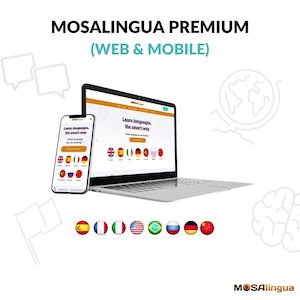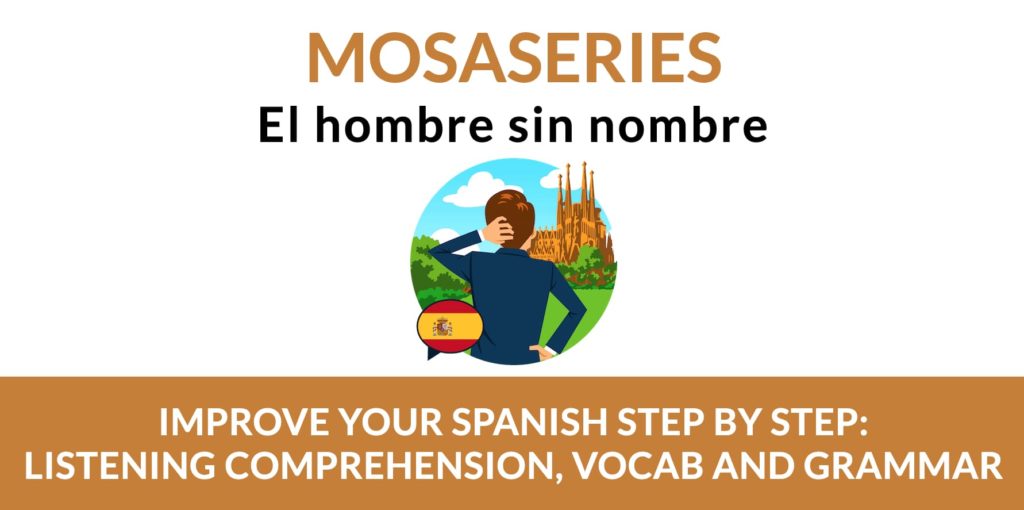As promised, here’s the next video in our language hack series! This one is great for those who want to know the best resources out there to learn their target language. The video is about how to improve your listening skills in order to reach your language learning goals.

How to Improve Your Listening Skills: Luca’s Language Hack (Video)
Make sure to watch all of the videos in our language hack series. We’ve made sure they’re all short and to the point. It’s also a good idea to jot down a few notes so that you can remember our tips! Here’s today’s hack about listening skills, brought to you by Luca (you can also read a recap down below):
What did you think? Subscribe to our YouTube channel for more tips and hacks like this one!
Listening Comprehension: Recap & Resources
Today I want to share with you my favorite tools I use to improve my listening skills. When I start learning a new language, I usually download a lot of podcasts on my smartphone so I can listen to them on the go.
On our blog you’ll find a selection of the best podcasts to learn Spanish, French, Italian, Portuguese and German.
I also love movies and TV shows. They are a very powerful tool to improve your listening skills. You can start watching them with subtitles in your native language, then you can switch to subtitles in the target language. And eventually, you’ll be able to watch them without any subtitles at all.
Another useful tool is television. Personally, I don’t watch a lot of TV in my native language. The only channels I watch are those that can help me practice the language I want to learn and speak. To use this tool I recommend watching the news, since the pace is slower and the accents are very standard, making them easier for you to understand.
You can find a lot of channels to watch on the website filmon.com. If you prefer radio stations, another great option is the website tunein.com. They even have a free app which is great when you’re commuting or waiting in line.
How Can Beginners Improve Their Listening Skills?
Not all of the resources Luca mentioned are suitable for beginners. You’ll simply get too frustrated if you only know 50 words in your target language and try to go straight for a movie! Abbe has some other beginner-friendly resources to recommend instead. Watch her video right here or on our YouTube channel. Feel free to turn on the subtitles if you need them (available for 6 languages). You can even slow the video down by clicking the gear icon to change the playback speed:
As a beginner, it’s really important to pick the right tools to practice listening comprehension with so that you don’t get overwhelmed and are more likely to stick with your language practice.
Hearing that, some of you might be having flashbacks to those super cheesy, usually outdated videos that came with your high school language textbook. Don’t worry, we would never force you to relive that! We have some other resources to recommend instead.
Resources designed for learners
For true beginners, we recommend choosing resources that are designed for learners, at least for the first few months. First, because you still have a lot of learning to do. Would you go straight to the 10-meter high dive without jumping off the low board first? You need to lay down a solid foundation before you move on to something too complicated, otherwise you could put your motivation in jeopardy.
Your main focus at this stage of the process should be on vocab. And you need to find a way to learn the correct pronunciation of every new word you learn. Lots of learners read a new word and memorize how they think it should be pronounced… which usually isn’t quite right. Then, when they hear it in a conversation or other listening exercise they don’t understand it, even though they know it and know what it means.
-
Flashcard apps
This is easiest to do with a flashcard app – ours includes built-in recordings by native speakers – but if you have another way of keeping track of vocab lists, Forvo is a great site for finding recordings to practice with. Choose your target language, search for a word or phrase, and listen to the recording. You can even download it as an MP3s and save it to your phone or computer.
Pro Tip: learn full phrases, sentences, and questions instead of only isolated words. Not only is this more practical for communication, but it can also help you understand them better when you come across them in one of the other resources below.
Liaisons, or the way we blend the ending of one word with the beginning of the next, can really change the way a group of words sounds. So when you learn them as a group, you’re more likely to be able to understand the individual words and make sense of what you hear.
-
Short dialogues
Once you have learned some words and sentences, move on to the next resource: dialogues about typical situations, like the ones in the MosaLingua app. By the way, when I say “move on,” I don’t mean “stop learning and reviewing vocab.” You should still aim to learn 5-10 new words or phrases a day, and add in other listening practice little by little. Most of your real-life listening practice at the beginning of your learning will be short conversations about common topics, so start there.
Pro Tip: You can pause the dialogue after one character asks a question, think about what they said and how you might answer, and then check your understanding based on the response.
-
Podcasts for learners
Podcasts for learners are another suitable resource for beginners. They’re often short, which is good since listening is such an intensive skill for beginners to practice. Plus, they’re usually focused on one specific topic, unlike podcasts for native speakers where the hosts can go off on a tangent. If you haven’t prepared that vocab, you’ll be totally lost. Some even have transcripts or lists of keywords you can use to reinforce what you hear. We organize our lists of our favorite podcasts for learners (that Luca pointed out above) by level, so you’ll know which ones are best for beginners. And we update them often, so don’t forget to check back for new listening material!
-
News clips
News clips aren’t designed for learners per se, but they are another nice tool for beginners. Why?
- Anchors tend to have neutral accents and speak clearly.
- Sometimes there are headlines or images to help with context.
- They’re short, and they’re also more interesting and varied than some other resources for beginners, since current events change all the time.
- You might already have some context to help you understand.
Pro Tip: Choose clips about topics you’ve already heard about in your native language. That way you can prepare some key vocab ahead of time based on what you already know.
For example, if you’re interested in Carnaval, you might study the words for “parade,” “holiday,” “celebrate.” Then, while you’re watching, see what you understand and if you hear any of the words you learned.
What if I still don’t understand?
And don’t worry if you’re having a hard time understanding at the beginning! It might be hard to believe it now, but after a few months of practice it will be like someone switched on the light making it easier for you to understand! This video is part of our series of 12 language learning hacks so subscribe to our channel to be sure you don’t miss any of them.
Before You Go, One Last Tip About Improving Your Listening Skills…
To give you an extra hand with your listening comprehension, we developed MosaSeries: The Man With No Name in five languages. It’s another great resource for beginners who want to work on their listening skills. And it can act as a segue into more complex listening resources, like TV and movies. You get all the drama, romance, and excitement of a TV show, but it’s designed for learners, so you also get a structured method for how to work your way through all 24 episodes.
It’s an original and gripping story that incorporates important practice for language learners. You’ll work on various skills over the course of two seasons of the audio series. Like most series, The Man With No Name is divided into multiple episodes. Each episode comes with lessons, video tips, and exercises for lots of practice opportunities. At the end of the series you’ll learn how to apply the method you’ve been using to “authentic” resources. And after 3-6 months, you will be able to:
- watch a foreign-language movie or TV show without subtitles
- hold your own in a conversation with native speakers.
To start learning a language (without even realizing you’re doing it), try MosaSeries today.
It’s currently available for people who are learning English, Spanish, Italian, French, and German. If you’re not learning one of these languages, keep your eyes peeled!
- Spanish: MosaSeries: El Hombre Sin Nombre
- Italian: MosaSeries: L’Uomo Senza Nome
- French: MosaSeries: L’Homme Sans Nom
- German: MosaSeries: Der Mann Ohne Namen
- And English: MosaSeries: The Man With No Name
Listen
And don’t forget! You can also listen to this article on our MosaLingua Language Lab podcast:
Listen to “#34 – How to Improve Your Listening Skills at the Beginning” on Spreaker.
Related posts:
Want to start improving your language skills today?
Start learning a new language today

Good news: we can help!
More good news: you can get started for free! Start your free trial now and for the next 15 days, take advantage of the most effective language learning method on the market!
Vocabulary flashcards, videos with subtitles, audiobooks, articles adapted to your level – with MosaLingua Premium (Web & Mobile), you’ll have access to all this and more. Get started right now. It’s free—and risk-free—to try!





Comments